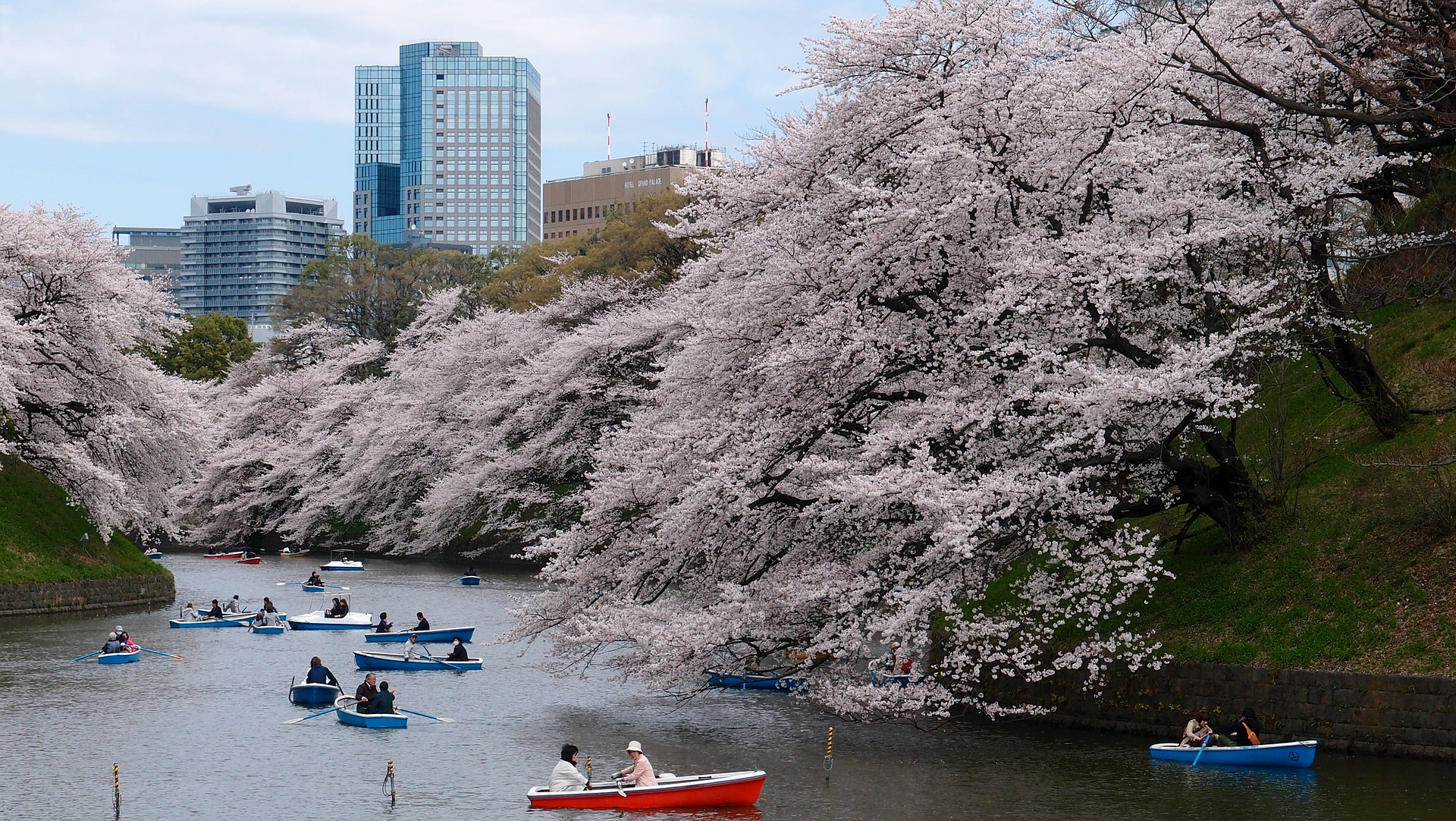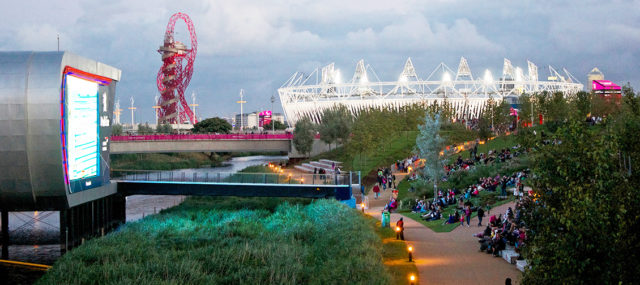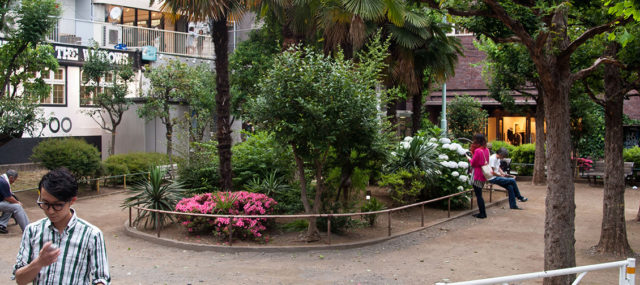
Reinventing Public Spaces in Tokyo
septembre 9, 2015 — Uncategorized
The Need for the Olympics
When we look back at the history of the Olympic Games, in particular, the spatial dimension of past host cities, we can find many Olympic Parks in which various sports stadia and other Olympic facilities were concentrated. These Olympic Parks not only have sports facilities, but also vast open spaces for spectators to gather and enjoy the atmosphere of the Games. In addition to the “official Olympic site”, we find that past Olympic cities utilized several other public spaces where visitors from all over the word could celebrate the global sporting event. These public spaces were required in the host cities for thousands of people to enjoy the event on screen. For example, during the 2012 Olympics, London used its public spaces in the capital for public viewing in addition to the newly constructed Olympic Park in East London. Hyde Park, Victoria Park and Trafalgar Square were occupied by spectators during the event, and these public spaces helped create the atmosphere of global celebration in the city beyond the boundary of the Olympic Park. Indeed, London has many great parks in the heart of the city, and this spatial setting, including size and accessibility, perfectly fit with the Olympics’ demands. As London’s case illustrates, large space is necessary for the biggest sporting event in the world.

Spatial Setting in Tokyo
While recent Olympic cities tend to concentrate sporting venues by creating vast Olympic Parks, and utilize existing public spaces for public viewing, Tokyo has a different spatial setting. First, the competition venues for the 2020 Games are largely scattered across the city. Indeed, there is no concentrated Olympic site, and the main stadium is located as a stand-alone Olympic venue with little public space around it. Furthermore, although the Olympic organisers have designated some parks for public viewing, their capacity and accessibility during the Games is questionable. The fundamental nature of public spaces in Tokyo is characterized by their small size and organic shape. Since there are few parks in the heart of Tokyo, streets often act as key public spaces. (It is said that there is no European type of plaza in Tokyo.). The small and scattered configuration of Tokyo’s public space is a contrast from London’s spatial setting. So the question is: is this a disadvantage for Tokyo, or a chance to invent new types of Olympic spatial settings?

New Technologies
In my view, the dispersed Olympic venues and “micro public spaces” in Tokyo will create a new way of enjoying the global event, and technologies will help to realize this vision. For example, the fact that Tokyo’s Olympic sites are scattered across the city means that spectators have to move from place to place, which has historically not been good for the Games. Yet, with sufficient provision of public transport, which is one of Tokyo’s strong suits, this will give spectators the opportunity to see and appreciate different parts of the city. The public and private sectors are currently planning to re-create the travel experience on public transport, and new technologies such as digital signage and multi-functional monitors embedded in the public corridor will provide entertainment throughout the journey. In this respect, designing the movement of people with new technology may change the way we travel.
As indicated above, traditionally, public viewing of events takes place in large open spaces on a big screen. However, recent image projection technologies, such as projection mapping, 360-degree projection and 3D holography can change the way we enjoy the Olympic Games in public. These technologies can even give viewers the sense that they are participating in the event, rather than just watching it. Since this type of viewing could take place in small public spaces or even in a narrow street, the amount of space is not a critical factor in these new forms of entertainment. Indeed, I am reminded of the previous Tokyo Olympics in 1964 when television was just starting to become popular, but not everybody could afford to buy it in their homes. To watch the broadcast of the Games, people would gather in small spaces in front of electronic appliance shops. The space itself may not have changed since then, but our interaction with it and our experience of the Games certainly will be different with the advent of these new technologies.
Public, Private and Social Sectors
If we could re-invent the travel experiences and as well as the utilization of public spaces in the heart of the city on the occasion of the 2020 Olympic and Paralympic Games, this would leave a tremendous legacy for Tokyo. To achieve this, collaboration between the public and private sectors is imperative. Since the public sector does not have enough sufficient financial resources or technological knowledge to undertake all of these changes, the private sector must play a key role in providing these resources as well as in implementing the ideas discussed here. In addition to these players, the role of civil society – or the social sector – is crucial, as they are the users and sometimes critical “watch-dogs” who will maintain these spaces over the long term. In other words, without the involvement of civil society, it may be difficult to sustain the Olympic legacies. In this respect, how civil society is integrated into the planning process is crucial. The success of the 2020 Games highly depends on this challenge.